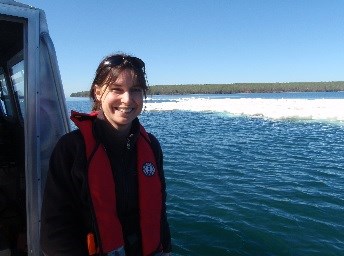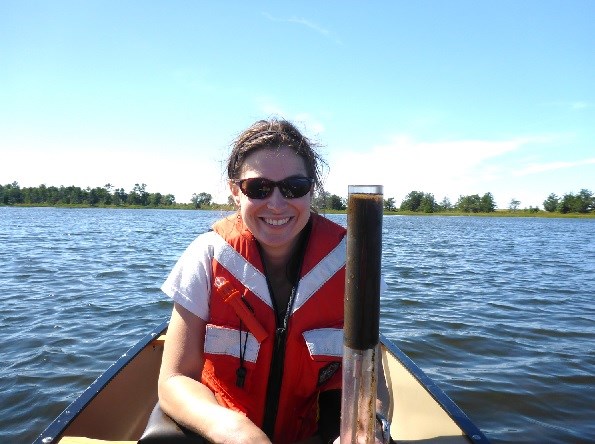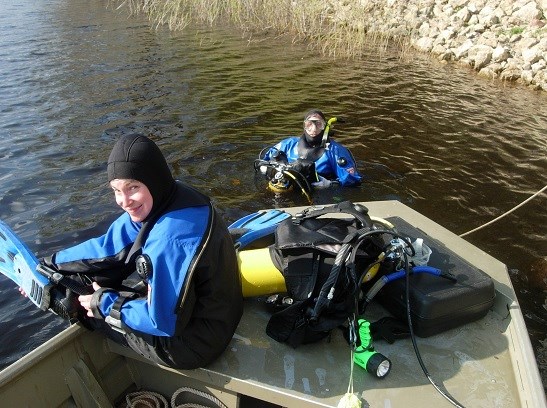
NPS Photo
As a child, Brenda LaFrancois loved being outside, but she never suspected she would become a scientist. In college at the University of Wisconsin- LaCrosse, she intended to pursue degrees in Spanish and physical therapy, not biology. Early in her college career, Brenda saw a posting for a summer job in Wisconsin where they would be electroshocking fish. She applied for the job and got it! Little did she know how much this summer job would change her life.
During that summer, LaFrancois, her supervisor, and her co-workers shocked sections of various water bodies with an electrical charge in order to temporarily stun fish into submission. It is important to note that when done correctly, electroshocking does not cause permanent damage to the fish. Once the fish were stunned, Brenda and her crew worked quickly to measure and weigh the fish, recording that data along with the species name, date, and location before the stun wore off and the fish were returned to the water unharmed. Electrofishing is a common scientific survey method, and it is important because scientists can use the data collected to determine the abundance, density, and size structure of the species they are researching. All of this information is key to informing fisheries management. After the summer ended and the fall semester began, LaFrancois shifted her college career from physical therapy to biology!

NPS Photo
At the beginning of her career, Brenda recollects about 25% of the people in her field being women, and the other 75% being male. Now she sees women in leadership roles, managing teams, and pushing everyone to do their best.
Brenda currently works as an aquatic ecologist with the National Park Service. Aquatic ecologists research natural populations of various species in the water. They learn about the abundance, and distribution of aquatic organisms. Aquatic ecologists study mostly fish, their prey, predators, and interactions in their natural habitat. Brenda helps staff develop research and manage projects regarding water pollution. She is also involved in other projects regarding invasive species and climate change.
In collaboration with the National Park Service, LaFrancois has promoted different projects throughout the Great Lakes, including funding opportunities. She and her co-workers completed a lake bottom mapping project recently which provides the size, shape, and the distribution of underwater features in sections of Lake Superior. The information from a lake bottom map is imperative to managing water quality, aquatic plants, algae, and various aquatic ecosystems.

NPS Photo
As a woman in science, LaFrancois was fortunate not to have faced difficulties due to the unfounded idea that science was a “man’s field.” Her graduate advisor gave her the opportunity to try her hand at management, which has helped her tremendously in her current position in the National Park Service.
When asked what words of wisdom she would impart to young women pursuing careers in science, Brenda suggests keeping in touch with people that can be of help to them in both their career and life in general. She also advises future women scientists to, “Just do it. Try lots of different things to get the experience. You never know what you’ll end up loving!”
Last updated: August 18, 2020
